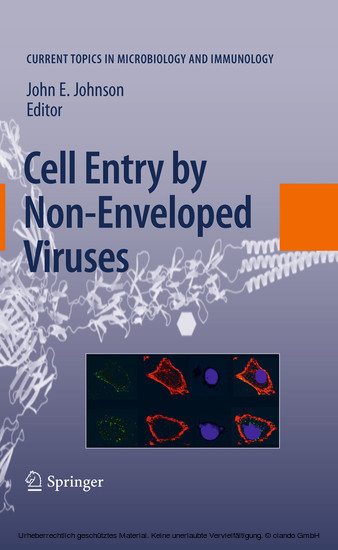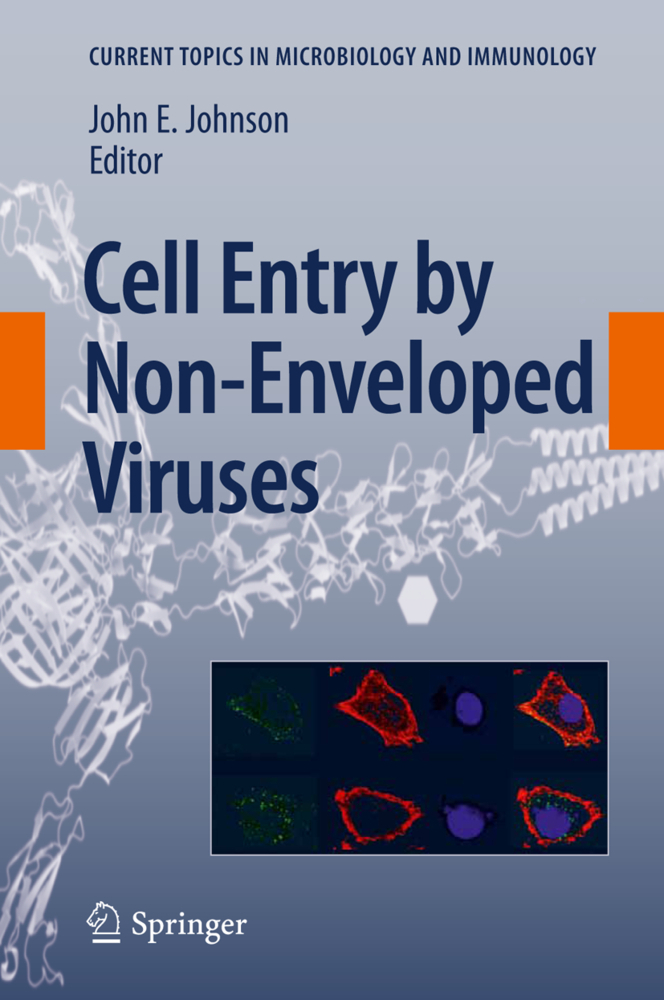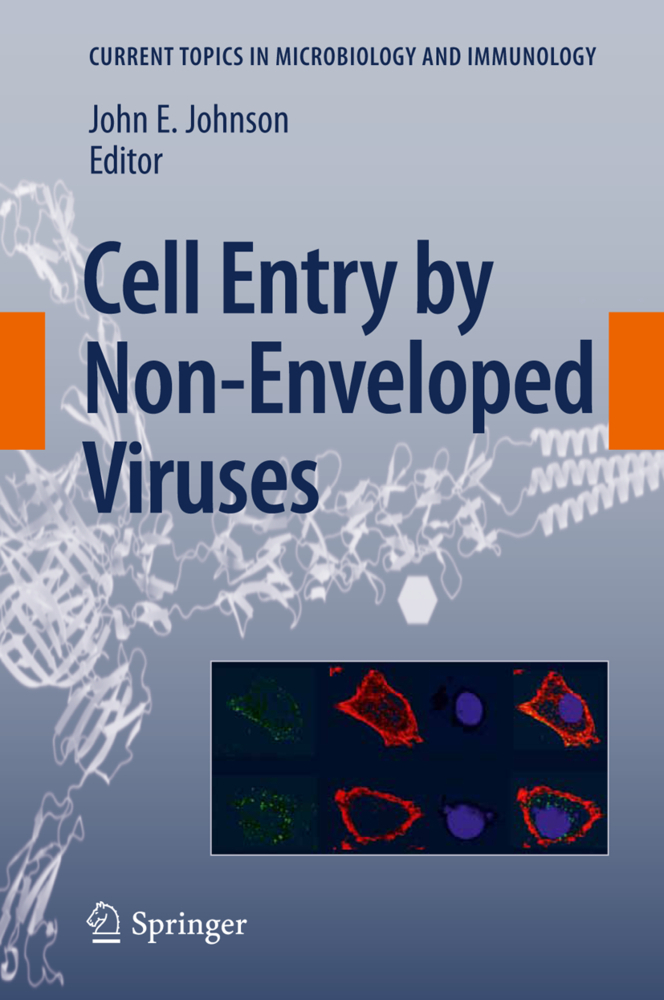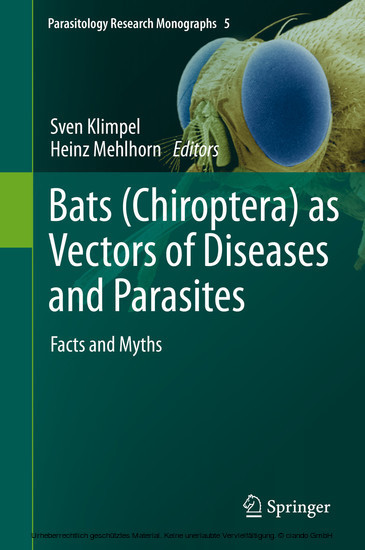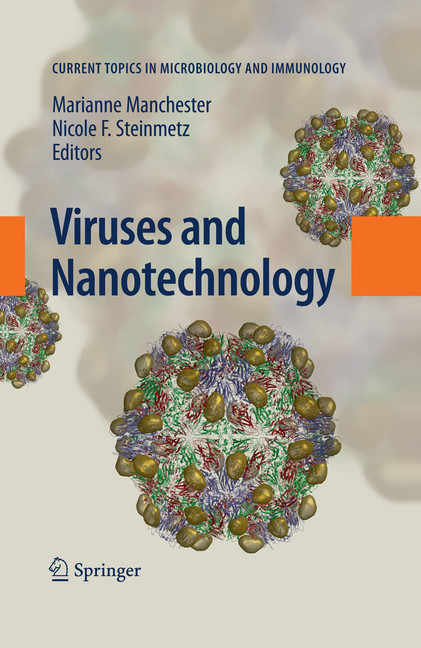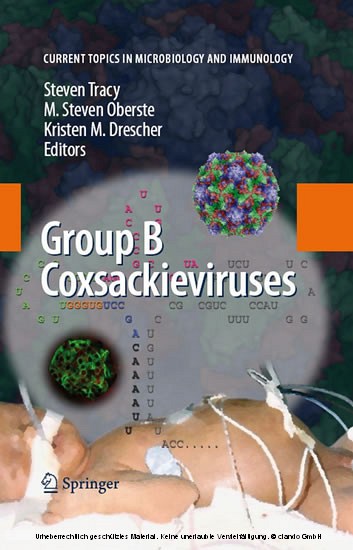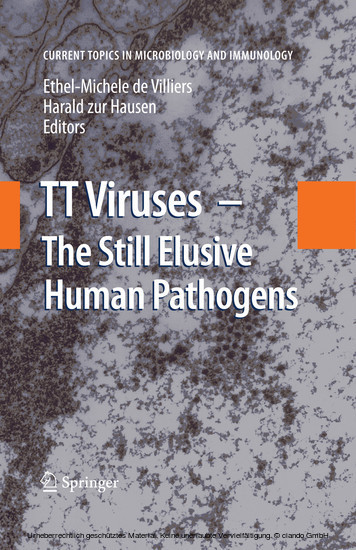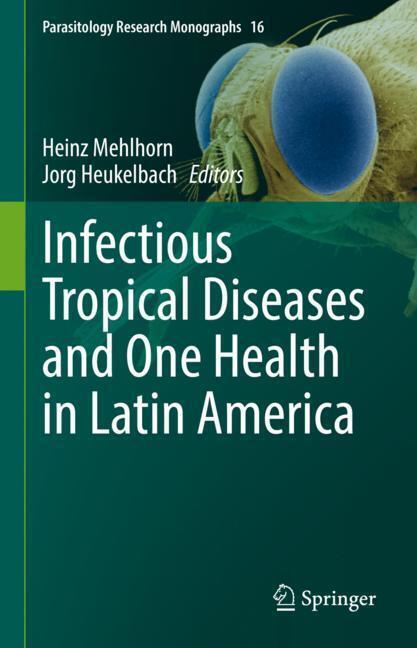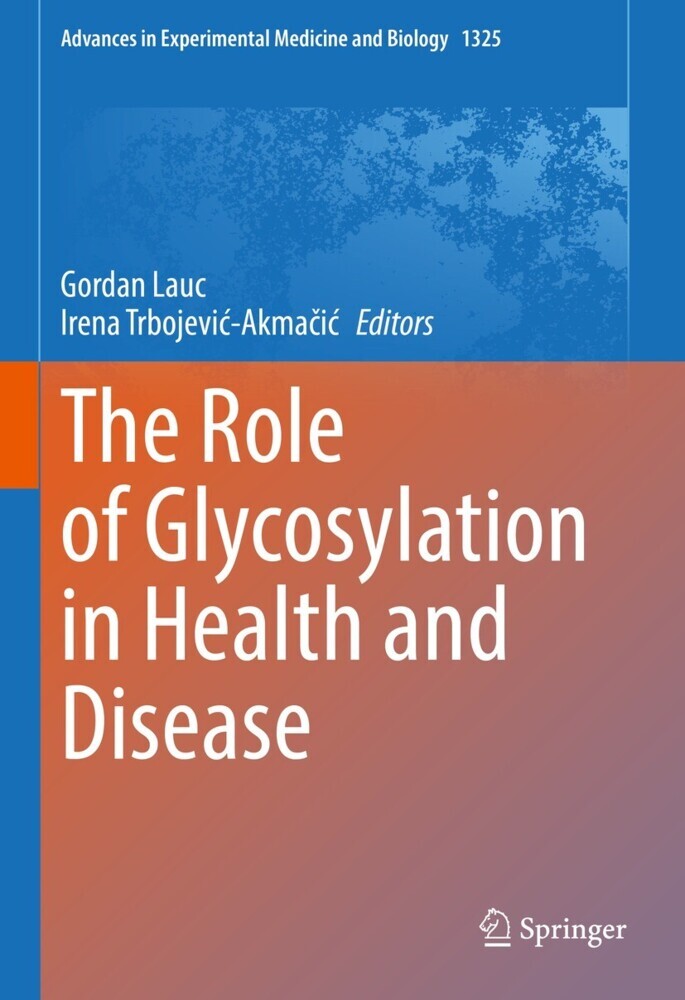Cell Entry by Non-Enveloped Viruses
Cell Entry by Non-Enveloped Viruses
Non enveloped viruses constitute an important class of medically significant pathogens. They encode their proteins in single (ss) and double strand (ds) RNA and DNA genomes and display a variety of sizes and structures. In this volume experts in the field provide up to date descriptions of many characteristics associated with the ssRNA noda, picorna and calciviruses, the dsRNA reo and rotaviruses, the ssDNA parvoviruses and the dsDNA polyoma and adenoviruses. While many aspects of these viruses have been addressed previously, this volume specifically focuses on the issue of their entry into cells, with particular attention to the translocation of the viral genome through a membrane, without the aid of inter-membrane fusion that is common and reasonably well understood in enveloped viruses. Sufficient detail has been revealed in most of the viruses discussed in this volume to establish a credible argument for convergent evolution. A variety of mechanisms are described to generate and tightly control the exposure of a fusion-like peptide or an entire gene product that facilitates membrane permeation and genome delivery into the cytoplasm and, for the DNA viruses, the nucleus. Since there is no viral membrane to fuse with the cellular membrane, the events at this interface are different from those associated with enveloped viruses and with the various fusion events associated with normal cellular function. Thus, while the factors critical for this process to occur have been well established for many of these viruses, a specific mechanism for genome penetration is yet to be determined. We believe that this volume will provide a reference of enduring value for the non enveloped virus field and our hope is that the focus on entry and genome translocation across a cellular membrane will stimulate new ideas and mechanistic studies of this critically important process.
1;Preface;6 2;References;8 3;Contents;10 4;Contributors;12 5;Flock House Virus: A Model System for Understanding Non-Enveloped Virus Entry and Membrane Penetration;16 5.1;1 Introduction;17 5.2;2 Capsid Architecture and Autocatalytic Cleavage of Subunits;18 5.2.1;2.1 FHV Expression Systems;18 5.2.2;2.2 Capsid Structure;19 5.2.3;2.3 Capsid-RNA Interactions;20 5.2.4;2.4 Autocatalytic Cleavage and Production of the Gamma Peptide;21 5.2.5;2.5 Structure and Organization of the gamma Peptides;23 5.2.6;2.6 Metal Ion Binding Sites;24 5.3;3 Early Events During FHV Cell Entry;26 5.3.1;3.1 FHV Cell Surface Receptor;27 5.3.2;3.2 Route of FHV Entry;27 5.4;4 FHV Membrane Penetration;27 5.4.1;4.1 Structure-Based Model of FHV Membrane Penetration;27 5.4.2;4.2 In Vitro Studies of FHV Membrane Penetration;28 5.4.3;4.3 FHV Membrane Lytic Activity Is Triggered by Low Endocytic pH;29 5.4.4;4.4 FHV Autoproteolytic Cleavage Is Required for Membrane Disruption;29 5.4.5;4.5 Working Model of FHV Entry and Membrane Penetration;30 5.4.6;4.6 Do Particle-Associated or Released gamma Peptides Mediate Membrane Interactions?;30 5.5;5 Entry-Intermediate Particle Types;31 5.5.1;5.1 The Eluted Particle: A Putative Entry Intermediate;31 5.5.2;5.2 Additional Entry Intermediate Particle Types?;32 5.6;6 Functional Domains of gamma Involved in Entry;32 5.6.1;6.1 gamma Trans-Complementation;33 5.6.2;6.2 Entry Related Function of gamma C-Terminus;33 5.6.3;6.3 Calcium Site Mutations Affect Membrane Penetration;34 5.6.4;6.4 Structure: Function Correlation of FHV Mutants;34 5.6.5;6.5 Does Quasi-Symmetry Dictate Separate Roles for gamma from Different Subunits?;35 5.7;7 Concluding Remarks;36 5.8;References;36 6;The Caliciviruses;38 6.1;1 Immunity Against Human Calicivirus Infection and Prospects for a Vaccine;38 6.2;2 Calicivirus Structure;41 6.3;3 Feline Calicivirus Interactions with Its Receptor;43 6.4;4 Interaction Between Noroviruses and Polysaccharides;45 6.5;5 Attenuation of NMV-1 Pathogenesis;47 6.6;6 The Cryo-TEM Structure of the T=3 MNV-1 Capsid;48 6.7;7 The Cryo-TEM Structure of MNV-1 Complexed with Fab´s;50 6.8;References;52 7;Picornaviruses;57 7.1;1 Introduction to Picornaviruses;58 7.2;2 Structure of Picornavirus Particles;60 7.3;3 Picornavirus Receptors;62 7.3.1;3.1 Immunoglobulin Superfamily Receptors: VCAM-1, ICAM-1, PVR, CAR;63 7.3.2;3.2 Decay Accelerating Factor;64 7.3.3;3.3 LDLR Family;64 7.3.4;3.4 Integrins;65 7.3.5;3.5 HAV Cellular Receptor (TIM-1);65 7.3.6;3.6 EV71 Receptors;66 7.3.7;3.7 Sialic Acid;66 7.3.8;3.8 Co-Receptors;66 7.3.9;3.9 Adaptation, Alternative Receptors, Tropism, and Pathogenicity;67 7.3.9.1;3.9.1 FMDV and Other Integrin-Binding Viruses;67 7.3.9.2;3.9.2 Major Group Human Rhinoviruses and Ig-Like Receptor-Binding Viruses;68 7.3.9.3;3.9.3 TMEV Pathogenesis;68 7.3.9.4;3.9.4 CD155/PVR as a Factor in Poliovirus Pathogenesis;68 7.4;4 Endocytosis and Sites of Uncoating;69 7.4.1;4.1 Clathrin-Mediated Endocytosis;70 7.4.1.1;4.1.1 Aphthoviruses;70 7.4.1.2;4.1.2 Minor Group Human Rhinoviruses;71 7.4.1.3;4.1.3 Major Group Human Rhinoviruses;72 7.4.1.4;4.1.4 Other Picornaviruses;73 7.4.1.5;4.1.5 Role of Endosomal pH;73 7.4.2;4.2 Caveolin-Mediated Endocytosis: Coxsackie and Echoviruses;75 7.4.2.1;4.2.1 Echovirus 1;75 7.4.2.2;4.2.2 Coxsackie B3: Role of Co-Receptors;76 7.4.3;4.3 Noncaveolin Nonclathrin Mediated Endocytosis: Poliovirus;77 7.4.4;4.4 Concluding Remarks on Picornavirus Endocytosis;78 7.5;5 Capsid Alterations During Uncoating;79 7.5.1;5.1 Enteroviruses;79 7.5.2;5.2 Aphthoviruses;85 7.6;6 Membrane Penetration;86 7.6.1;6.1 Review of Experimental Data;86 7.6.1.1;6.1.1 Interaction of Altered Particles with Membranes;86 7.6.1.2;6.1.2 Virus-Induced Membrane Permeability;86 7.6.1.3;6.1.3 Role of Externalized N-Terminus of VP1;87 7.6.1.4;6.1.4 Role for Released VP4;87 7.6.1.5;6.1.5 How Much VP4 Is Released During Picornavirus Entry?;88 7.6.2;6.2 Models for Entero/Rhinovirus Membrane Penetration;88 7.6.3;6.3 Membrane Penetration by Other Picornav
Johnson, John E.
| ISBN | 9783642133329 |
|---|---|
| Artikelnummer | 9783642133329 |
| Medientyp | E-Book - PDF |
| Auflage | 2. Aufl. |
| Copyrightjahr | 2010 |
| Verlag | Springer-Verlag |
| Umfang | 230 Seiten |
| Sprache | Englisch |
| Kopierschutz | Digitales Wasserzeichen |

